New perk! Get after it with local recommendations just for you. Discover nearby events, routes out your door, and hidden gems when you sign up for the Local Running Drop.
In a perfect world, all of your long training efforts would steer you past local food markets serving up homemade baked goods and slow-drip espresso. But in the real world, you’re more likely to run into gas station or convenience store when in desperate need of some mid-workout fuel, knowing you are still many miles from home. Sometimes, when your bottles are low and your pockets are empty, you’ve just gotta eat and drink pronto or risk the dreaded bonk. Raging hunger pangs are never conducive to PR and QOM efforts.
Carrying your nutrition is always a good idea, but a gas station convenience store isn’t a terrible place to look when you need to supplement this fuel. While far from a nutritional nirvana, these outlets do provide a range of useful fuel options that can help athletes keep up the pace. (And no, they are not all about lukewarm hot dogs on rollers.) With a bit of scrutiny, it’s still possible to make smart fueling options that will keep you going strong without a side order of gut rot.
Run out of gels and chews? In this article, we rank some common gas station store finds that work in a pinch to power you up. Here are the grab-and-go champs.
RELATED: The Best Pit Stops and Watering Holes for Triathletes Across the USA
Fig Newtons
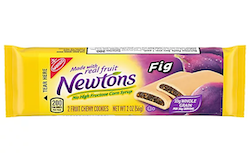
When you need some fuel in a hurry, bypass the candy bars for this mini-mart stalwart. Chewy and delicious, high-octane Fig Newton’s contain 80 percent carbohydrates – mostly from flour, dried figs and added sugar. So you’ve got a good mix of fast-acting simple sugars for immediate energy and slower-acting complex carbs to stick with you longer and help power an all-day excursion. Two cookies deliver 100 calories and 21 grams of carbs. There is less fat than your typical candy bar allowing for less of a digestive effort when you recommence your workout. If a food doesn’t require much digestion, your body can immediately start to absorb and use the energy from it, and that’s going to improve your performance to a greater degree. It’s worth noting that dried figs contain a range of vitamins, minerals and electrolytes including sodium, calcium, vitamin K, iron and potassium. A bag of Skittles? Not so much.
RELATED: Everything You Ever Need to Know About Electrolytes
Banana

These days, many gas station shops have a few bananas lingering around the cash register. And this is about your only chance to fuel on “whole food” at these locations making it a responsible decision. A medium-sized banana has about 27 grams of carbs (you need at least 30 grams of carbs per hour of exercise to keep up the pace) that is split nearly evenly between glucose and fructose which research shows can improve endurance performance. And this study in PLOS One suggests the carbs in a banana are just as effective in bolstering performance as a sports drink. Bonus, you get some potassium to help replenish this electrolyte for better muscular functioning. If possible, choose a fruit with a bunch of dark spots as this will be higher in easier-to-digest sugars than fruit with green-tinged skin. For some athletes, there is the risk that the fructose and fiber in the fruit can sit in the gut and cause distress. More reason to understand how your digestive system works with various fuel options.
RELATED: The 10 Best Carbohydrate Sources For Triathletes
Cold-Brew Coffee
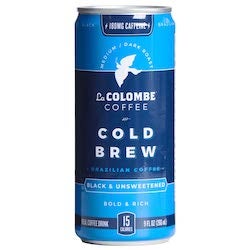
These cold brews have what it takes to perk up the rest of your workout. Since coffee is the first ingredient, you get a fairly hefty dose of caffeine which continually proves to help boost exercise performance and perhaps help bring you back to life from a near bonk. Keep in mind that it can take upwards of 60 minutes for caffeine to peak in your system so don’t expect to perk up majorly as soon as you’ve downed a bottle. Next comes liquefied sugar, about 30 grams in a bottle, which is generally absorbed by your system faster than solid sugar. Overall, not something you want to strive for in your day-to-day life, but during long workouts, this is certainly advantageous as a way to offer a quicker energy hit and less risk for digestive woes. A bottled Frap is likely to be made with low-fat milk which is beneficial in keeping fat numbers lower to ease the burden on your digestive system. The liquid helps with rehydration efforts and you even get a surprising amount of sodium.
RELATED: 10 Things The Latest Science Tells Us About Caffeine and Athletes
Sour Candies
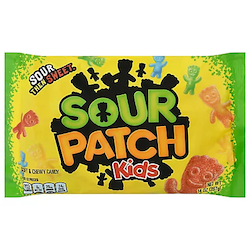
Be it a worm or bear-shaped, these are primarily sugar and corn syrup in a sweet-sour chewy form – not much different from your go-to sport nutrition chews. These snacks offer a quick hit of easily-digestible simple carbs to help recharge your engine. The evidence is clear that athletes can benefit from consuming ample amounts of carbs, ideally from easily-digested forms like sugar, during multi-hour bouts of training. Just keep in mind that sour candies typically have little to no sodium so you may want to supplement them with something a bit salty and you should make sure to consume them with an ample amount of water to improve the rate at which the sugars are released into the bloodstream. Make these a training treat and not a dietary habit. And be sure to brush your teeth when you get home as all this sugar can be bad news for your pearly whites.
RELATED: Is Triathlon Ruining Your Teeth?
Pop Tarts

Sure, these dorm room favorites are the definition of ultra-processed food, but nobody is hunting for kale at a gas station pit stop to fuel multi-hour workouts. And let’s be honest: Pop Tarts are going to be more fun to eat than most energy bars and don’t have to be toasted. About 70% of their fruity flavored calories hail from carbs to help energize your pursuits and with generally low levels of fiber, fat and protein wolfing down a Pop Tart won’t require your body to make a huge effort to tap into this energy source. Sugar, corn syrup and dextrose offer up a range of different fast-working carbs that might be more effective than relying on a single sugar source. And if all you can buy is a box of them, any extras will stash nicely in your jersey pocket.
RELATED: Uncrustables: Kid-Tested, Triathlete Approved
Slushies
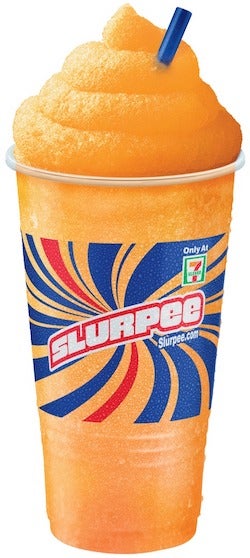
If you stumble into a gas station store feeling hot and beaten down consider bee-lining it to the slushie machine for a neon-colored icy elixir. To prevent a slushie mixture from freezing solid, there must be at least 12% sugar present in the solution – the sweet stuff acts as an antifreeze in the solution. That means it has enough sugar calories to help bring your sagging blood sugars back up to help power up your muscles. Like a sports drink, but with a serious brain freeze risk and a little more patience needed to drain the cup. Of course, it will also help with hydration efforts, especially if you let some of the ice melt. A study in the International Journal of Sports Nutrition and Metabolism discovered that ingestion of an icy slushie can help improve endurance performance, likely by lowering core body temperature. Plus, each sip through the straw will make you feel like a kid again. The carbohydrate and calorie content can vary depending on which machine you get your drink from and the size of the cup, but can be up to 120 calories and 30 grams of fast-digesting sugar in an 8-ounce serving. So be careful if you are grabbing a jumbo-sized cup as too much sugar at once can cause a big spike in your blood sugar, followed by a crash in energy leaving you feeling lethargic a few miles into your post-slushie exercise.
RELATED: The Fine Art (and Science) of Fueling for Hot Races
Granola Bars

Consider this exercise comfort food in a wrapper. Most granola bars are made with oats and sugar offering up a mix of slow- and fast-working carbs for sustained energy. Two bars stuffed into one package supply a solid 30 grams of so of energizing carbs. And these are typically much cheaper, but likely just as effective, as any engineered energy bars you’ll find at the gas station. Take the time to read the package label as ideally you are looking for an option with less fat and protein – say a maple brown sugar bar instead of a peanut butter one – to give you more energy with less risk of stomach revolt. Although, if you are just out for a long, lower-intensity workout then a little extra fat and protein pose less of a problem and you can use your cravings to guide your choice.
Pretzels
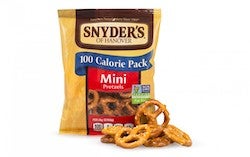
Sticks or twisted, pretzels offer a famished athlete with crunchy low-fiber carbs and salt as a way to take a break from the performance-food monotony. And these are not made using an oily frying process like chips so are easier and quicker to digest. As a bonus, you side-step the risk of covering your sweaty hands in cheesy chip dust and oil, and subsequently rubbing that all over your kit. Bad look. A serving, about 17 pretzels, will deliver roughly 110 calories, 23 grams of carbs (mainly from wheat flour) and a generous 450 mg of sodium. There are no pure sugary calories here, however, so if you are really red-lined and need a blood sugar boost quick you may want to first scarf down something with fast-working sugary calories. Packages of goldfish crackers have a similar nutritional and texture profile as pretzels.
RELATED: Beyond Pasta: The New Rules of Carb Loading
Peppermint Patty Candies
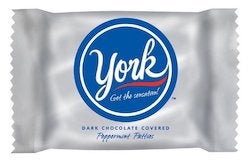
Many athletes want nothing more than to crush a chocolate bar when making a mid-workout quickie-mart pit stop. One downside of many candy bars is they don’t skimp on fat, and that will slow down gastric emptying and potentially mess with your digestion. So when a chocolate craving strikes, reach for this minty option. Compared to other candy bars, nut-free peppermint patties have a higher carb-to-fat ratio (about 10 grams of carb for every 1 gram of fat) so you’re not asking your stomach to perform any tough digestive tasks. And preliminary research suggests that consuming peppermint oil may boost exercise performance by relaxing muscles. Besides, it can provide your palate with a welcomed refreshing new flavor.
RELATED: Menthol: The Key to Staying Cool in Hot Conditions?
Fruit and Nut Mix
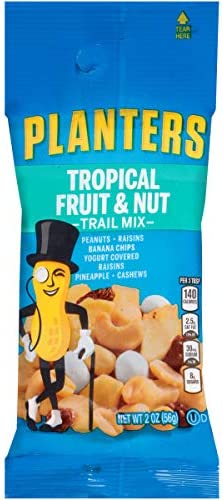
A packet of trail mix offers a way to break out of palate fatigue and the dried fruit such as raisins contains natural simple sugars to help power your muscles. The nuts and seeds offer satisfying crunch and enough calories to help meet your training needs, and, if salted, a much needed hit of sodium if you’ve been sweating buckets. Plus, it feels like you are fueling up on something a lot less processed than most things on offer at a pump station. But what you should not overlook is that the extra protein and fat in the crunch bunch will slow down digestion. So leave a bit of time between pounding back your GORP and going hard once again to avoid playing Russian Roulette with your stomach. And, again, don’t forget to swig back a bunch of H2O to facilitate better digestion.
Jerky
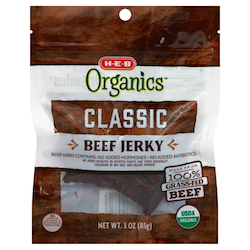
When you’ve grown tired of the ubiquitous sugary energy solutions, savory parched meat offers your taste buds a welcome respite. Plus, their lofty sodium levels can help replenish what’s lost in sweat. But be warned, when you hop back on your bike or get back to your running stride your body prioritizes powering your muscles and puts processes involved in digestion on the back burner. That helps move your legs but makes digesting the protein in jerky a slower process. That raises the risk for gastro woes if your timeframe between eat and exercise is too short. Also, jerky is going to be low in carbs so won’t do much to provide your muscles with their preferred energy source. Overall, jerky can be a more optimal choice for lower-intensity sessions and post-workout fueling as the protein will be better utilized to kickstart muscle repair.
RELATED: Recipe: Make Your Own Jerky-Energy Bar
Pizza
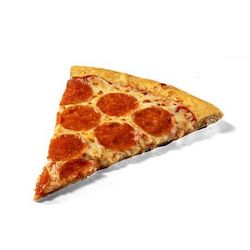
When your gas tank is drained and you’re desperately hungry, it can be oh-so tempting to grab anything lounging under the heat lamp, be it a hot dog, slice of glistening pizza or taquitos with a mystery filling. But for your own good, think about whether there is anything else you could eat instead to satisfy you. These items just contain too much fatty calories to be ideal training fuel. Try wolfing down two slices of cheese and pepperoni and see how eager your stomach is going to be to get back at it. This is the problem with letting yourself get so low that you swing open the door and run towards craving-induced suboptimal choices. With this said, if you are mid-way through a casual workout and will be lingering at the pit stop for a fair amount of time, these hot-food options aren’t so bad and can hit the spot. Just be sure to stash better fuel options in your jersey pocket to help get you home.
RELATED: Should You Ditch Sports Nutrition Products for Real Food?
